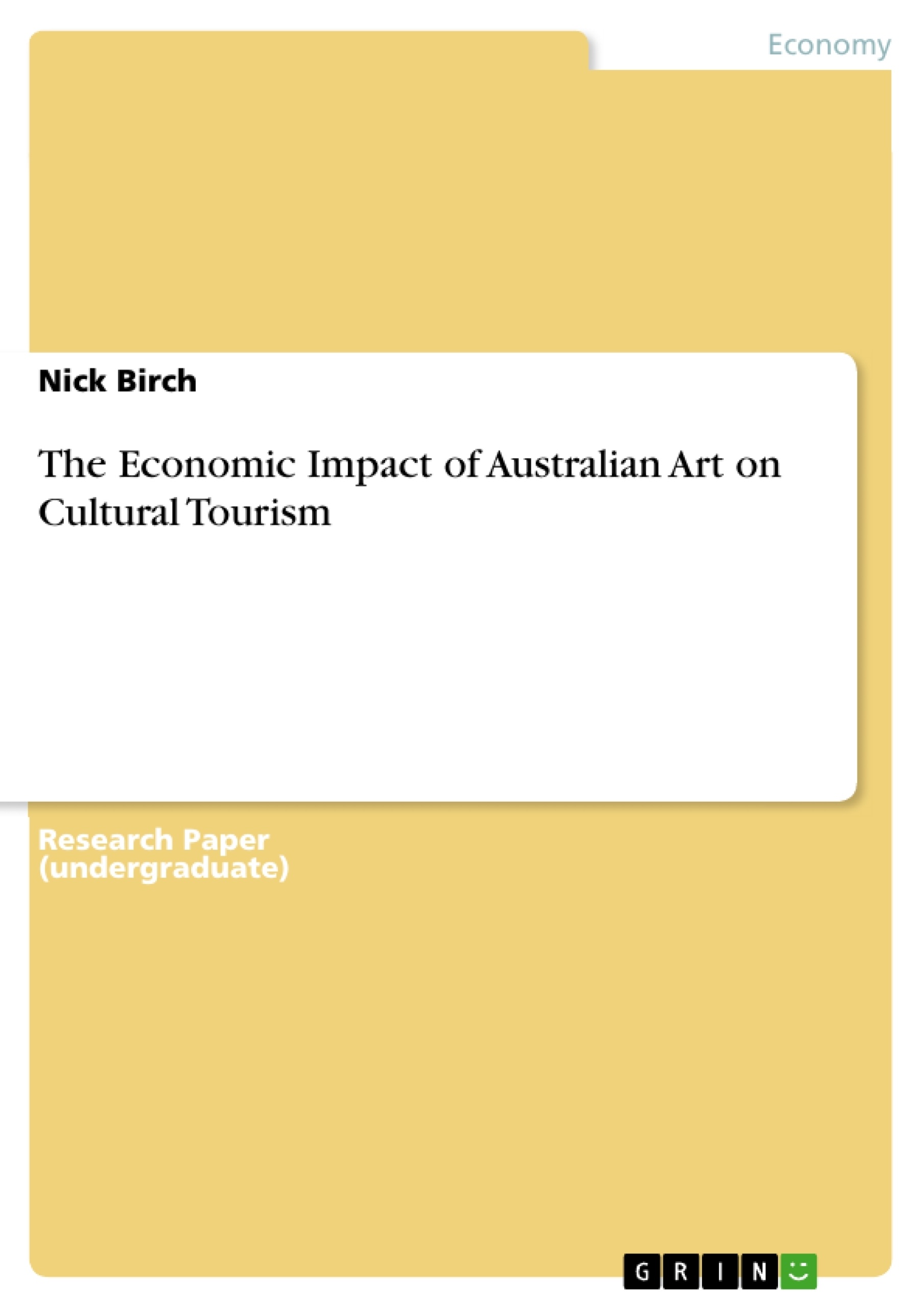The cultural tourism of a country cannot prosper without a strong sense of national identity. What sets a nation apart is what draws visitors, which contributes to a flourishing culture where art is at the very centre. The Australian Bureau of Statistics confirms that the culture sector in Australia is big business, perpetuated in art galleries, museums, theatres, film studios, opera companies, writers’ weeks, rock concerts and arts festivals (Grybowski, 2014). Many different factors impact the motivation of cultural visitors, such as demographics, the dollar and what kind of experience is being sought.
There are highly innovative businesses and individuals operating in the creative industries. Encompassing music, performing arts, software development, design and visual arts, the creative economy is recognised as a major contributor to a city’s lifestyle and attractiveness to skilled workers. To gain a better impression of ways that an industry impacts an economy, it may be pragmatic to analyse one Australian city in particular. ‘Cities and regions actively nurture their creative industries to capture the economic benefits they bring and grow local competitive industries’ (Quirk, 2014, p.2).
Sustaining cultural tourism through the arts requires support from local and federal government. In a message from Mr Rupert Myer AM, Chair of the Australia Council for the Arts, he shares that ‘Australia has every reason to be culturally ambitious and this is a very significant juncture in our cultural life. The development and delivery of the National Cultural policy, Creative Australia, symbolises the importance of the arts to a vibrant, innovative and healthy Australia’ (Myer, 2013).
‘Today, we have more high quality artists applying for support than ever before, some of them working in ways not imagined 10 years ago. On behalf of these artists we welcome the commitment of an additional $75.3 million over four years to boost our nation’s creativity’ (Myer, 2013).
Contents
INTRODUCTION
CREATIVE AUSTRALIA
INTERNATIONAL CULTURAL TOURISM
BRISBANE AS A CULTURAL CAPITAL
BRISBANE’S GALLERY OF MODERN ART (GoMA)
RUBY TJANGAWA WILLIAMSON
ARCHIE MOORE
TRACEY MOFFATT
BRISBANE’S ECONOMIC IMPACT
BRISBANE’S ECONOMIC FUTURE
CONCLUSION
REFERENCES



